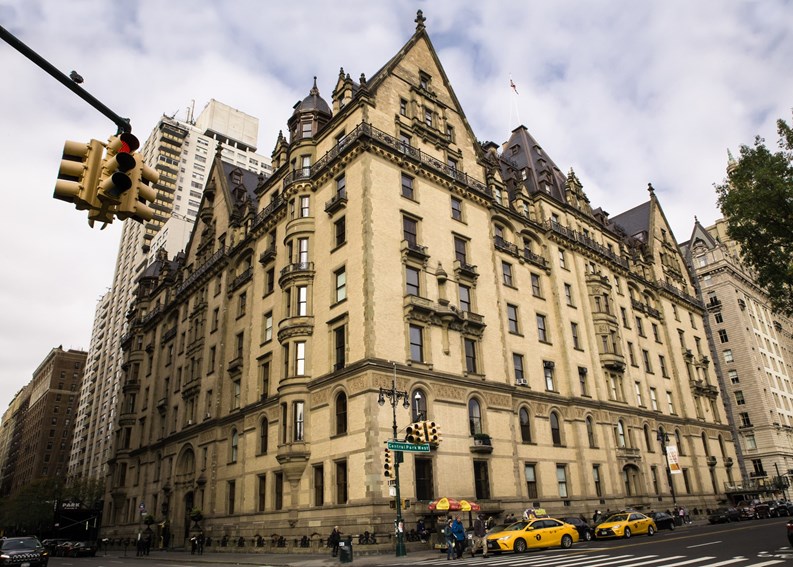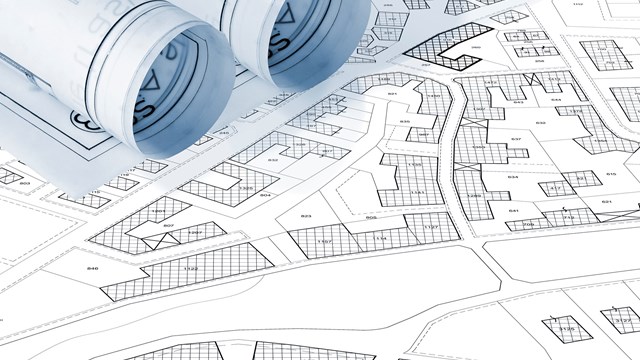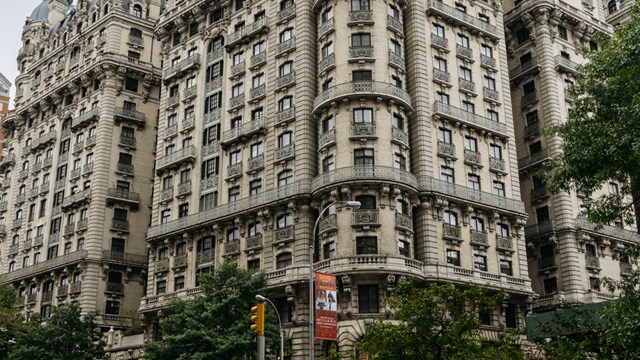The Dakota, on Manhattan’s Central Park West, is perhaps the best-known apartment building in the world—for all the wrong reasons. The iconic building made front-page news in early December of 1980, when former Beatle and Dakota resident John Lennon was shot to death in front of his home by an obsessed fan. With Lennon’s widow—and celebrity artist in her own right—Yoko Ono continuing until very recently to live in the building, the Dakota is treated as a memorial by flocks of tourists from all over the world. A different cadre of enthusiasts haunt the building for its connection to the cult classic horror film Rosemary’s Baby, and as the one-time home of actor Boris Karloff, who earned fame for his portrayal of Frankenstein in the 1930s. The Dakota is also well known for its large, luxurious apartments with lavish price tags—and for the occasional lurid lawsuit fought over them.
But what is little-known but infinitely more fascinating is how and why the Dakota came to be in the first place. The developer of the building was Edward Clark, initially a scholarly lawyer in upstate New York who was instrumental in the development of the iconic Singer sewing machine company. For the Dakota, the product he produced was luxury multi-family housing at a scale not seen anywhere before. The building was a hollow square 200-feet on a side with four small lobbies and elevator/stair banks at the four corners of the central courtyard, which was arranged so carriages could drive in from the street and discharge their passengers in complete privacy at their doorstep. There was a double ramp down from both 72nd and 73rd Streets to a second service courtyard within the building at the basement level directly beneath the open air courtyard for residents. Here, the horse-drawn delivery wagons could unload directly at any of the four service elevator/stair banks at the center of each of the four sides of the service court. (In inclement weather, the annual Christmas party of residents is held there, catered by the residents themselves (Yoko Ono would provide home made sushi and Lauren Bacall baked elaborate desserts)). The room and apartment sizes dwarfed even the luxurious Van Corlear, and the spaces were lighted with both gas and electricity.
As Thomas Edison’s company supplying electricity to the city had not yet extended its cables to the Upper West Side, Clark constructed an underground power plant beneath a small park to the west of his new building. It housed boilers that provided heat to the apartment house, and dynamos that produced electricity and supplied it to both the apartments and the rowhouses along 73rd Street. Placing these service functions in a separate structure away from the residences provided a marketing advantage, as boiler explosions and fires were a perennial fear because of their frequency in multi-family tenements in the crowded downtown sections of the city.
The Dakota also offered a dining room and hotel-style room service meals to the residents who rented apartments in his new venture. The kitchens were in the basement, readily supplied via the ramp from the street and the internal underground service court. There was a large dining room within the building at the corner of Central Park West and 72nd Street as well as an adjacent ladies’ dining room and a private dining room for parties along with reception spaces - all of which were converted to residential space after the food service operation closed during World War II. Additional amenities included private servants’ quarters on the 8th floor and dormitories for male and female servants with communal bathrooms on the 8th floor, and private laundry rooms on the 9th floor with drying facilities on the roof near children’s play areas. On the second floor were small self-contained apartments and single rooms (all with private bathrooms) that were available to residents for short-term rental for out of town guests, or as work spaces (Yoko Ono owned several, some being used merely as convenient storage spaces).
Clark died in 1882 when the Dakota was only partially complete. His grandson Edward Severin Clark inherited the 72nd Street block, along with the Dakota building. The Dakota remained in the ownership of the Clark family until the last of the heirs died and the family’s foundation decided to liquidate its real estate holdings. That was in 1960. By then, the little park with its underground boilers and dynamos had been replaced with tennis courts, which in turn were replaced by a large parking lot. A contract was drawn up to sell the Dakota to a developer, who intended to vacate the building, tear it down, and replace it with a predictably bland apartment house of pokey apartments. Because the Clark family was very rich and didn’t depend on the Dakota for any significant part of its income, rents had seldom been increased, resulting in many very long time tenants paying significantly under-market rents, and an entire enclave of former servants of the Portuguese consul still lived on the eighth floor—even though their former employer had decamped to Portugal years earlier—and paid no rent at all. Occupying the largest apartment in the building (in the southwest corner of the first floor) was a elderly woman who had lived there with her parents until they died, and then with her eccentric brother until he died. Still in the front foyer was a stuffed horse whose rider wore a full suit of armor, and one of the bathrooms had been improved with a deep plunge bath whose supports extended into the basement.
In 1961, with the building in imminent peril of being permanently erased, a small army of concerned New Yorkers mobilized to find some way of preserving it. Virtually at a minute to Midnight, another deep-pocketed developer was found, who bought the entire property from the family’s foundation. He then immediately resold the Dakota to a newly-formed cooperative corporation owned and controlled by the building’s residents, and kept the parking lot, on which he built the bland apartment house that might otherwise have replaced the Dakota.
That wasn’t quite the end of the story, as the co-op corporation then had to dispose of its shares of stock and the apartments it owned. Most of those apartments and the associated corporate shares were bought by their residents at reduced insider prices, even though in many cases the new monthly maintenance charges were significantly more than the old rents. The rest of the apartments were sold at then-market rates to outsiders. At the time you could buy a six-room apartment in original unrestored condition for $65,000. The old woman who had lived so lavishly for almost her entire life on the first floor but who couldn’t afford to buy her home was given a lifetime rent-free lease on a small second-floor apartment, and somehow alternative quarters were found for the entire group of Portuguese ex-servants on the eighth floor.
Gradually, the new co-operative settled into an ongoing existence with apartments changing hands periodically as all cooperative apartments in New York do. And gradually, decades of neglected maintenance issues were addressed and resolved. But a couple of outrageously drawn-out lawsuits engendered a fortress mentality in the residents that was exacerbated after Lennon’s murder. In one, a former president of the co-op board who had bought several apartments in the building was thwarted when he attempted to buy another when an investigation of his finances revealed that he was seriously overextended and simply couldn’t afford it. Nonetheless, he brought suit against the board and his neighbors and refused to settle the dispute amicably. Eventually he was evicted and his holdings sold to reimburse the cooperative for the money he owed to it. Another protracted lawsuit was based on the desires of a new owner of the former dining rooms and kitchens to make significant alterations to the spaces and to usurp a portion of the building’s dry moat for new air conditioning equipment. He had bought the apartment but never moved in, and continued to pay its monthly maintenance charges for the nearly 20 years of litigation it took before he finally bailed out, but never admitting defeat.
The nature of the Dakota building is unique in the city, as is the nature of its unusually creative and very well-heeled body of residents. The exterior of the building is an Individual Designated Landmark. Many of the people who live there would be suitable for collective designation as Human Landmarks if there were such a category.







Leave a Comment